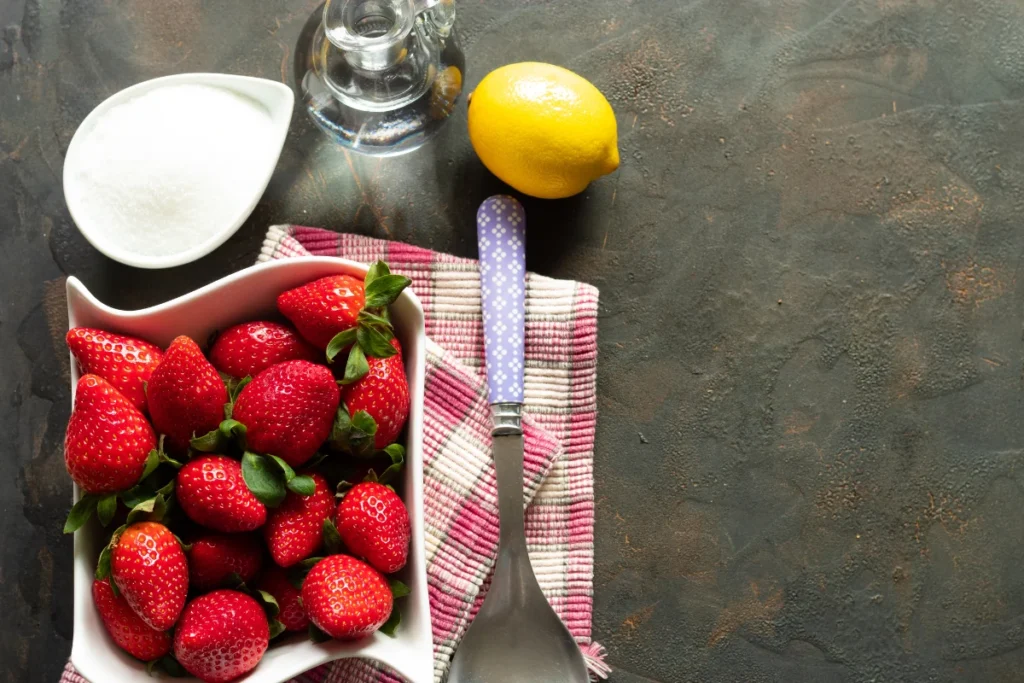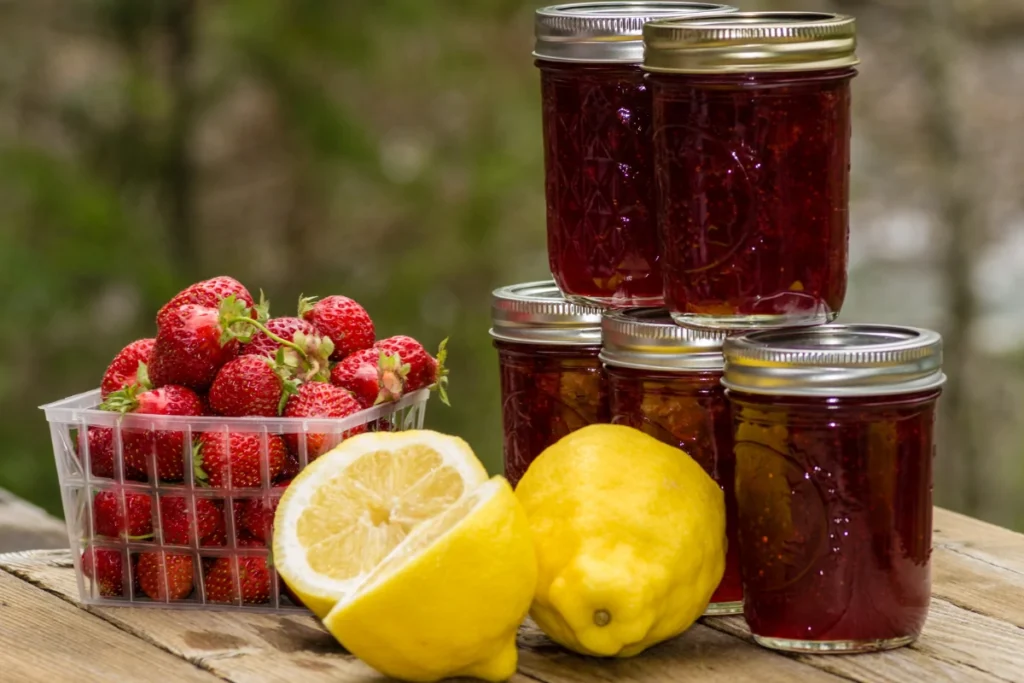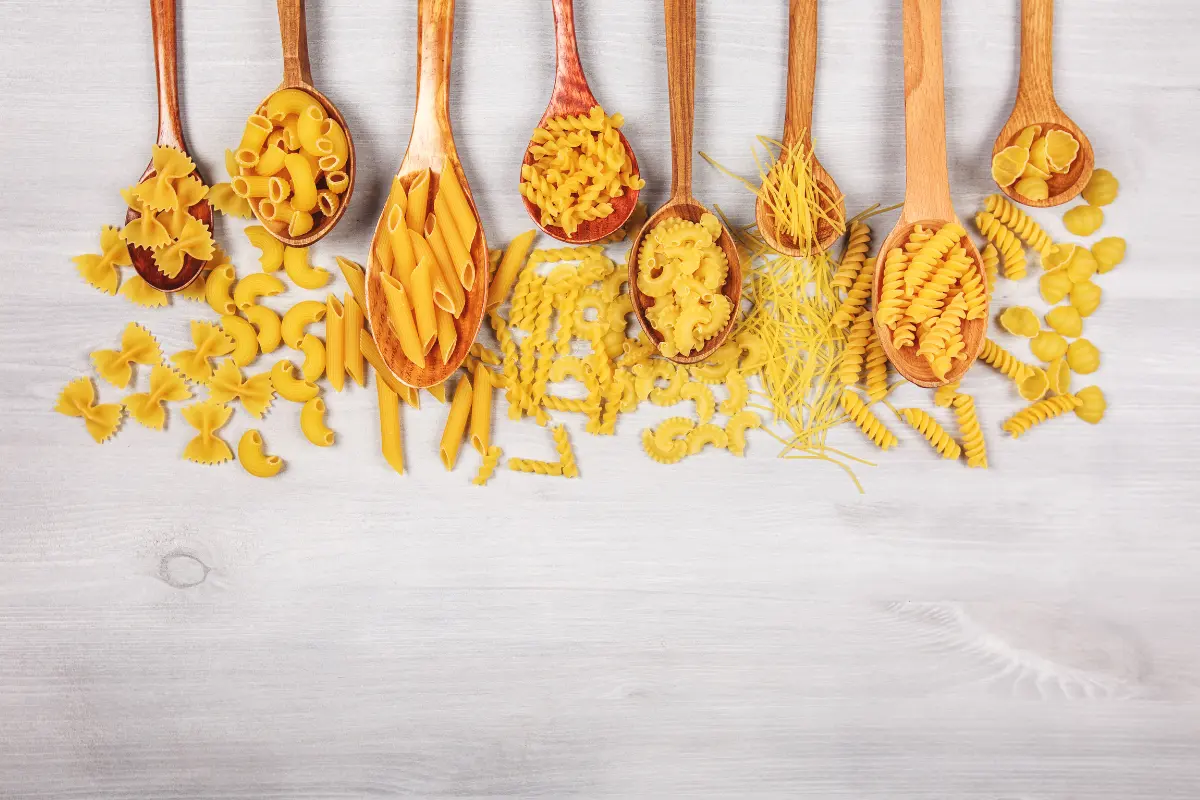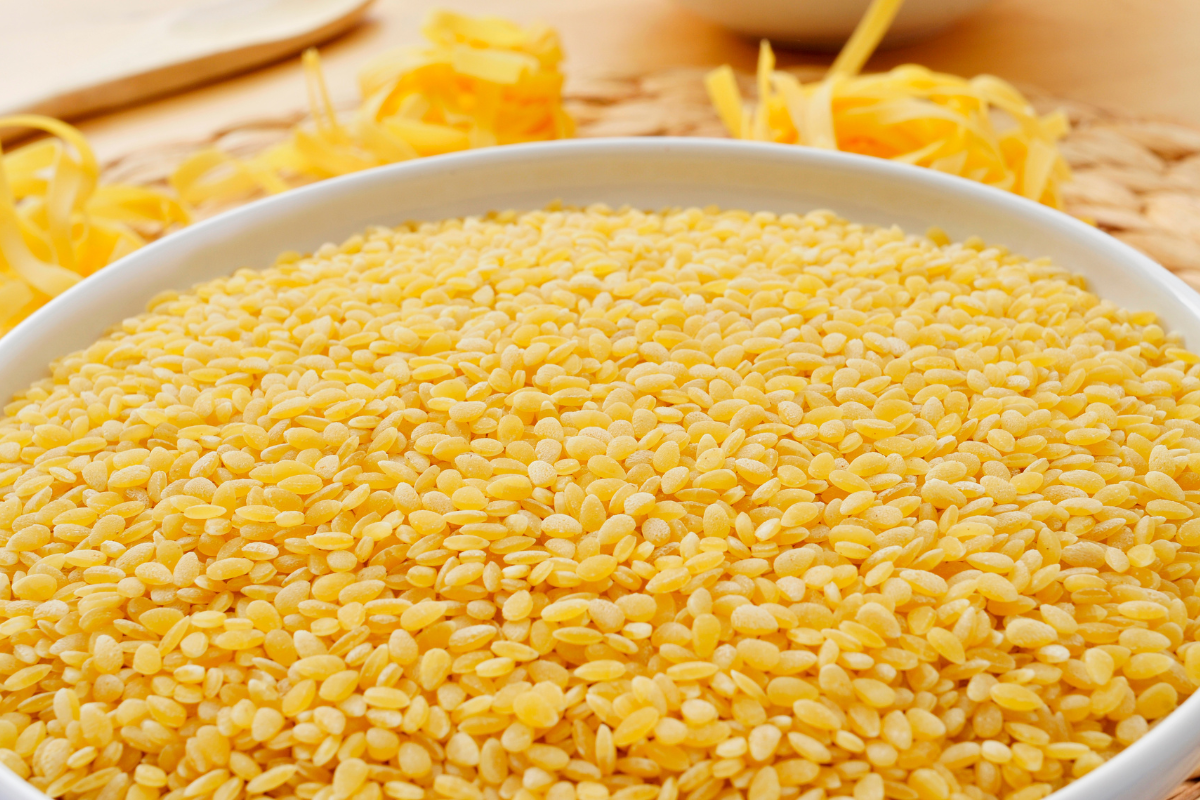Introduction to Strawberry Jam Making: The Essential Role of Lemon Juice
Making strawberry jam is an age-old tradition that combines the sweetness of ripe strawberries with the tangy punch of lemon juice. This delightful harmony not only elevates the flavor but also plays a pivotal role in the preservation and texture of the jam.
In this article, we’ll explore the myriad benefits of adding lemon juice to strawberry jam. Uncovering the science behind its necessity and offering practical tips to perfect your homemade preserves.
Understanding Pectin and Acidity
How Lemon Juice Affects Pectin
Lemon juice is a key player in jam making, primarily due to its high pectin content. Pectin, a natural polysaccharide found in the cell walls of fruits, is crucial for helping jam set properly. Strawberries, while delicious, are naturally low in pectin. This shortfall means that without the addition of a pectin-rich substance, the jam might not achieve the desired gel-like consistency.

By introducing lemon juice, you’re not just infusing the jam with a zesty flavor but also supplying the much-needed pectin that ensures your jam sets just right. The acid in lemon juice helps to extract pectin from the strawberries during the cooking process. Thus, enabling it to form a network that traps the fruit’s juices and solidifies as it cools.
The Importance of Acidity in Jam Texture
Acidity plays a critical role in the gelling process of jams and jellies. The optimal pH for pectin to set is between 2.8 and 3.5, which is quite acidic. Most fruits do not naturally fall within this pH range, but lemon juice, with its naturally high acidity, can adjust the pH of the strawberry mixture to the ideal level.
Moreover, the acidity from the lemon juice enhances the overall taste of the jam by balancing the intense sweetness of the strawberries with its sharp, refreshing tang. This not only improves the flavor profile but also increases the shelf life of the jam by creating an environment less conducive to microbial growth.
By understanding the dual roles of lemon juice—both as a pectin provider and a pH balancer—you can master the art of jam making, ensuring your strawberry jam has the perfect consistency and flavor every time. Whether you’re a novice or a seasoned jam maker, appreciating these fundamental aspects will elevate your jam to new heights.
Balancing Sweetness and Flavor
The Role of Lemon Juice in Flavor Balance
When crafting homemade strawberry jam, achieving the perfect balance between sweetness and acidity is key. Lemon juice is instrumental in this balancing act. It adds a crisp, bright flavor that cuts through the natural sweetness of the strawberries, preventing the jam from becoming overly cloying. This interplay of flavors not only enhances the taste but also brings out the depth and richness of the strawberries’ natural bouquet.
Additionally, the tartness of the lemon complements the strawberries, adding a layer of complexity to the jam’s flavor profile. This is why many seasoned jam makers insist on the addition of lemon juice, not just for its practical benefits in setting the jam, but for the vibrant zest it brings to the final product.
Other Ingredients to Enhance Jam Flavor
While lemon juice is a staple in enhancing the flavor of strawberry jam, other ingredients can also contribute to a more complex and appealing taste:
- Sugar: Acts as a preservative and sweetener. The right amount of sugar enhances the natural flavor of the strawberries without overshadowing it.
- Vanilla extract: A dash of vanilla can add a subtle warmth and richness, complementing the fruity tones of the strawberries.
- Spices such as cinnamon or cardamom: These can be used sparingly to introduce warm, spicy notes that make the jam more intriguing and flavorful.

Employing these ingredients in conjunction with lemon juice allows for a more tailored and gourmet approach to jam making. Experimenting with these additions can transform a simple strawberry jam into a customized preserve that reflects personal taste and culinary creativity.
By understanding how lemon juice and other ingredients interact to balance and enhance flavors, you can craft a strawberry jam that is not only delicious and safe to store but also a joy to create and consume. This knowledge empowers you to tweak your recipes to perfection, ensuring that each batch of jam is a celebration of flavors.
Extending the Shelf Life of Homemade Jam
How Acid Affects Preservation
The longevity of homemade strawberry jam is significantly influenced by its acidity level. Lemon juice, with its natural citric acid, is excellent for enhancing the preservative qualities of jam. Acid acts as a barrier to bacterial growth, which is crucial in preserving the freshness and safety of your jam. By lowering the pH of the jam, lemon juice helps maintain its quality over time, preventing spoilage and fermentation.
Furthermore, the acid in lemon juice acts as an antioxidant, reducing the oxidation of the fruit and preserving the vibrant color of your strawberry jam. This means not only does your jam stay fresher for longer, but it also retains its appealing bright red appearance, making it just as delightful on the eyes as it is on the palate.
Tips for Storing Strawberry Jam
To maximize the shelf life of your homemade strawberry jam, consider these storage tips:
- Proper sterilization: Ensure all jars and lids are thoroughly sterilized before use to eliminate any bacteria that might cause spoilage.
- Airtight sealing: After filling the jars with jam, ensure they are sealed airtight while the jam is still hot to create a vacuum that inhibits bacterial growth.
- Cool, dark storage: Store your jam in a cool, dark place such as a pantry or cellar. Light and heat can degrade the quality of the jam over time.
- Refrigeration after opening: Once opened, keep the jam refrigerated and tightly sealed to maintain its freshness.
By adhering to these storage principles and understanding the protective role of lemon juice, you can enjoy your homemade strawberry jam for many months, savoring the taste of summer even in the colder seasons. Whether for personal use or as delightful gifts, properly preserved jam remains a treat that captures the essence of homemade care and quality.
Making the Perfect Strawberry Jam
When and How to Add Lemon Juice
Crafting the perfect batch of strawberry jam involves timing and technique, especially when it comes to adding lemon juice. Add the lemon juice early in the cooking process to fully harness its benefits. This allows the acid to work effectively in extracting pectin from the strawberries and setting the pH level right for optimal gelling.

Here’s a simple guide on how to incorporate lemon juice into your jam-making process:
- Measure accurately: Use about 1 tablespoon of lemon juice per cup of crushed strawberries. This ratio ensures that there is enough acidity to set the jam without overpowering the natural flavor of the strawberries.
- Mix thoroughly: Ensure that the lemon juice is evenly distributed throughout the strawberry mixture before the cooking process begins.
Common Mistakes to Avoid
Avoiding common pitfalls can make the difference between good jam and great jam. Here are a few tips to ensure success:
- Overcooking the jam: This can break down the pectin, resulting in a runny jam. Cook just until the gelling point is reached.
- Using overripe fruit: Overripe strawberries have less natural pectin and may result in a softer set. Use fruit that is just ripe for the best results.
- Skimping on lemon juice: Not adding enough lemon juice can lead to a jam that doesn’t set properly and may also affect its preservation quality.
By paying attention to these details and understanding the role of lemon juice in the jam-making process, you can achieve the perfect consistency and flavor in your homemade strawberry jam.
Frequently Asked Questions
Should I use fresh or bottled lemon juice?
When making strawberry jam, the type of lemon juice you use can impact the flavor and setting quality of your jam. Fresh lemon juice is generally preferred for its bright, natural flavor, which can enhance the taste of your strawberries. However, bottled lemon juice offers a consistent level of acidity that is crucial for the gelling process. If you prioritize consistency in acidity and are making large batches, bottled lemon juice might be more convenient.
What is lemon juice substitute?
If you find yourself out of lemon juice, there are a few alternatives that can still help your jam set properly:
- Lime juice: Similar in acidity and pectin content, lime juice can be a direct substitute for lemon juice.
- Citric acid: A more concentrated form of acidity, a small amount of citric acid can be used as a substitute in jam making.
- Vinegar: In a pinch, vinegar can also be used, although it might slightly alter the flavor profile of your jam.
How much lemon juice should I add?
The amount of lemon juice needed can vary based on the acidity and pectin content of the fruit being used. A general rule of thumb is to add 1 tablespoon of lemon juice per cup of crushed strawberries. Adjust the amount slightly depending on the taste and the desired firmness of the jam.
These FAQs address common concerns and provide useful tips for enhancing your jam-making experience, ensuring every batch turns out just right. Whether adjusting ingredients or experimenting with different flavors, the key is to balance the science of preservation with the art of flavor.
Advanced Tips for Expert Jam Makers
Adjusting Lemon Juice Quantities for Taste and Texture
For those who have mastered the basics and want to refine their jam to professional standards, adjusting the amount of lemon juice can fine-tune the balance of flavor and texture. Consider the following advanced tips:
- Taste test as you cook: Instead of sticking rigidly to a recipe, taste your jam as it cooks and adjust the lemon juice accordingly. If the jam tastes too sweet, a little more lemon juice can add the necessary tartness.
- Experiment with different types of lemons: Meyer lemons, for instance, are less acidic than regular lemons and can provide a milder, sweeter flavor to your jam.
Experimenting with Additional Flavors
To elevate your strawberry jam, consider incorporating additional flavors that complement both the strawberries and the lemon. Here are a few suggestions:
- Basil or mint: Herbs can add a fresh, aromatic twist to your strawberry jam.
- Ginger or pepper: For those who enjoy a bit of spice, a hint of ginger or a few grinds of black pepper can add an unexpected and delightful kick.
- Orange zest: Combining citrus flavors can enrich the complexity of your jam, adding layers that tease the palate.
Employing these advanced techniques allows you to customize your jam to your personal tastes and preferences, making each batch uniquely yours. This approach not only enhances the culinary experience but also sparks creativity in the kitchen, making jam making a more engaging and enjoyable craft.




